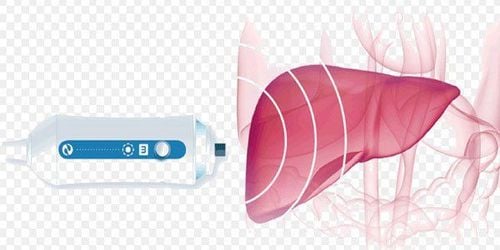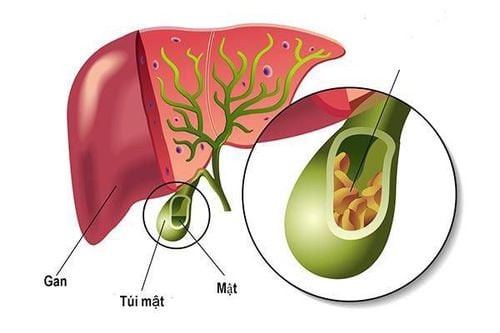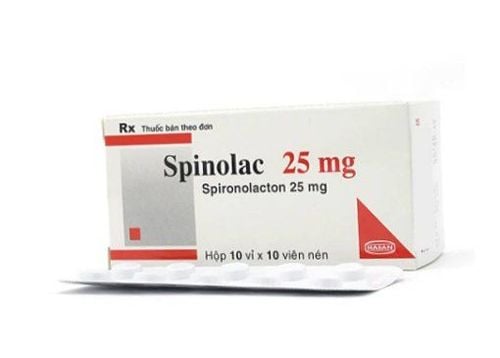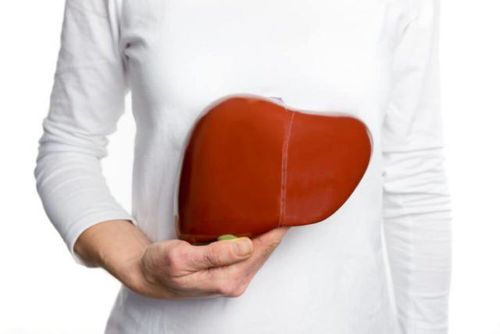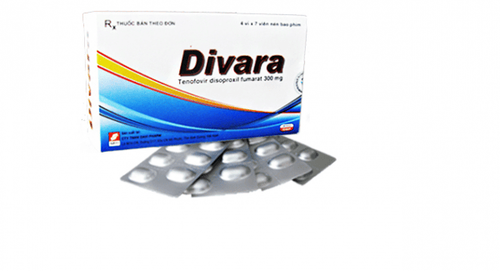This is an automatically translated article.
The article is professionally consulted by Master, Doctor Le Thi Minh Huong - Emergency Medicine Doctor - Department of Resuscitation - Emergency - Vinmec Nha Trang International General Hospital.Primary biliary cirrhosis is a chronic disease of the liver, characterized by autoimmune destruction of the intrahepatic bile ducts and cholestasis. Early diagnosis and treatment of primary biliary cirrhosis helps slow the progression of the disease.
1. Diagnosis of primary biliary cirrhosis
1.1 Diagnosis based on clinical symptoms Some patients with primary cholestatic cirrhosis may be asymptomatic for many years. Others have some characteristic symptoms such as: Fatigue, itchy skin, dry mouth, dry eyes, pain in the right upper abdomen, yellowing of the skin and eyes, darkening of the skin unrelated to sunlight, fluid accumulation in the fossa. abdomen (ascites), swelling of the feet and ankles. In addition, patients may also have symptoms of diarrhea, may have fatty stools, fatty deposits around the eyes and eyelids or in the folds of the palms, soles, elbows, knees ,...1.2 Diagnosis through laboratory tests Blood tests to assess liver function : Check liver enzyme levels to assess the possibility of liver disease and biliary tract injury; Blood test for autoimmune diseases: This test can detect anti-mitochondrial antibodies if the patient has primary biliary cirrhosis (these antibodies are almost absent in people without the disease or with chronic liver disease). other liver disease). However, a small percentage of patients with primary biliary cirrhosis do not have anti-mitochondrial antibodies; Imaging: Liver ultrasound, liver magnetic resonance imaging and computed tomography can be used to find abnormalities in the liver; Liver biopsy: The doctor inserts a fine needle into the liver through the skin and takes a small sample of tissue in the liver for laboratory testing. This method helps to accurately diagnose the disease or determine the stage of the disease. Your doctor may also take multiple liver biopsies to check for progression of primary biliary cirrhosis. 1.3 Differential diagnosis of primary biliary cirrhosis from other diseases The disease should be differentiated from chronic biliary tract obstruction (eg, gallstones or biliary stricture), primary sclerosing cholangitis, carcinoma of bile ducts, sarcoidosis, drug toxicity and some cases of chronic hepatitis.

2. Complications of primary biliary cirrhosis
When liver damage progresses, patients with primary biliary cirrhosis may experience a number of serious complications such as:Cirrhosis: The scarring of the liver, resulting in impaired liver function. Cirrhosis can occur in the late stages of primary biliary cirrhosis. Patients with cirrhosis may lead to liver failure (which occurs when the liver cannot function properly); Portal hypertension: Blood from the intestines, spleen, and pancreas flows into the liver through the portal vein. When scar tissue from primary biliary cirrhosis interferes with the normal flow of blood through the liver, blood cannot flow, increasing pressure in the portal vein. And because blood doesn't flow through the liver normally, hormones, drugs, and toxins in the blood won't be filtered through the liver; Varicose veins: When blood flow through the portal vein is slow or blocked, it can back up through other veins, especially those in the stomach and esophagus. These blood vessels are characterized by thin walls, so when the pressure increases, it can cause bleeding in the upper stomach or in the esophagus, which can be life-threatening; Osteoporosis: Patients with primary biliary cirrhosis have a high risk of weak and brittle bones, more prone to fracture than the general population; Vitamin deficiency: Because the biliary tract is damaged, it does not provide the necessary amount of bile for the body's needs, so the system's ability to absorb fat and fat-soluble vitamins such as vitamins A, D, E and K is not enough. digestion is reduced, leading to a deficiency of the above substances; Memory problems: Some patients with primary biliary cirrhosis have memory problems, reduced ability to concentrate; Liver cancer: The disease destroys healthy liver tissue, increasing the risk of liver cancer; Increased risk of other diseases: People with primary biliary cirrhosis are more susceptible to metabolic diseases or immune system disorders such as restrictive scleroderma, thyroid disease, and rheumatoid arthritis.
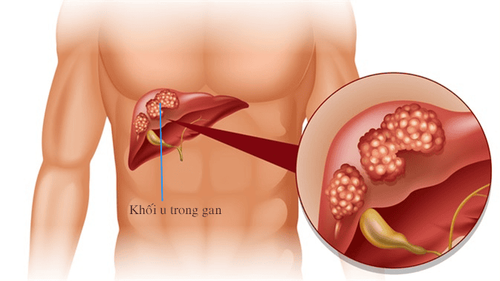
3. Methods of treating primary biliary cirrhosis
Biliary cirrhosis has a slow progression, patients can live a normal healthy life 10-15 years after being diagnosed with the disease. However, when the disease reaches a later stage, the disease can cause unpredictable complications, so early treatment is needed to slow the progression of the disease, reduce symptoms and prevent complications. Treatment options include:3.1 Treatment slows the progression of the disease and prolongs life Using ursodeoxycholic acid (UDCA): This is a bile acid that helps bile move through the liver. Although UDCA does not cure primary biliary cirrhosis, it can improve symptoms, liver function and prolong patient life if treatment is started at an early stage of the disease. However, UDCA is less effective in those with advanced liver damage. Side effects of the disease can be weight gain, diarrhea and hair loss; Liver transplant: In cases where primary biliary cirrhosis no longer responds to medical treatment, liver failure begins, liver transplantation is used to prolong the patient's life. Signs of liver failure include accumulation of fluid in the abdomen, gastrointestinal bleeding, malnutrition, uncontrolled itching, jaundice, broken bones, etc. Liver transplant is a procedure to remove the diseased liver and replace it. with a healthy liver from a liver donor. The 2-year survival rate of patients after liver transplantation is 80%. However, primary biliary cirrhosis often recurs in the transplanted liver (although it does not recur after several years). 3.2 Treatment to control and relieve symptoms of the disease Control of itching: Cholestyramine or rifampin can be used. Itchiness can also be controlled with a liver transplant when other methods have not worked; Reduce fatigue: Identify the cause of fatigue to treat the root. The doctor will prescribe the patient to use the right medication to reduce fatigue. 3.3 Treatment to prevent complications of portal hypertension: The doctor performs screening for portal hypertension, portal varicose veins, upper gastrointestinal bleeding, then prescribes drug treatment or surgery; Vitamin deficiency: Patients need to supplement with vitamins A, D, E and K as prescribed by the doctor; Osteoporosis: Treatment with calcium and vitamin D supplements, combined with daily exercise to increase bone density. 3.4 Palliative treatment with lifestyle changes Good overall care will help patients with primary biliary cirrhosis be healthier, improving some of the symptoms of the disease. Important notes for the patient are:
Choose foods that reduce sodium because sodium contributes to tissue edema and fluid accumulation in the abdominal cavity; Limit the use of alcohol because the liver must break down alcohol, so it is easy to damage the liver parenchyma if drinking alcohol;

The danger of liver cancer has shown the importance of screening and early detection of the disease. Therefore, Vinmec International General Hospital has provided customers with a package of screening and early detection of liver cancer to screen for liver cancer pathology for people at high risk of disease such as: alcoholics, cirrhosis, family history of liver cancer, cirrhosis, hepatitis B virus infection, chronic hepatitis C,...
Service selection Package for screening and early detection of liver cancer, patient will be examined, consulted and performed tests, diagnostic imaging to evaluate liver function, liver diseases and liver cancer screening. With a system of modern machinery and a team of highly qualified and experienced doctors, Vinmec is committed to the best protection for the health of patients.
To learn more about liver cancer testing methods at Vinmec, please book an appointment on the website for service.
Please dial HOTLINE for more information or register for an appointment HERE. Download MyVinmec app to make appointments faster and to manage your bookings easily.





